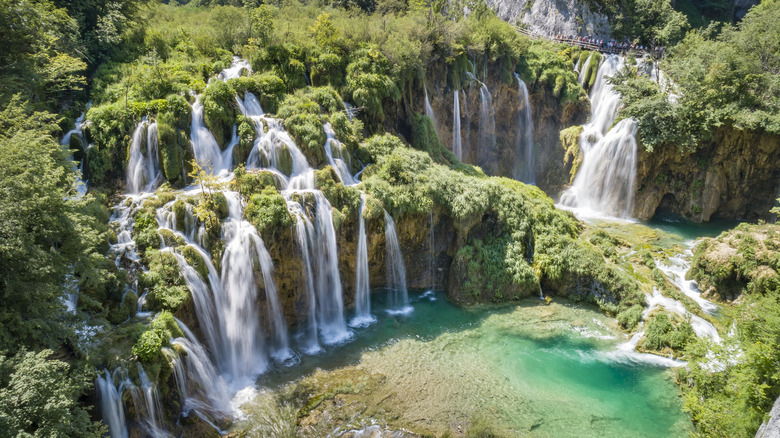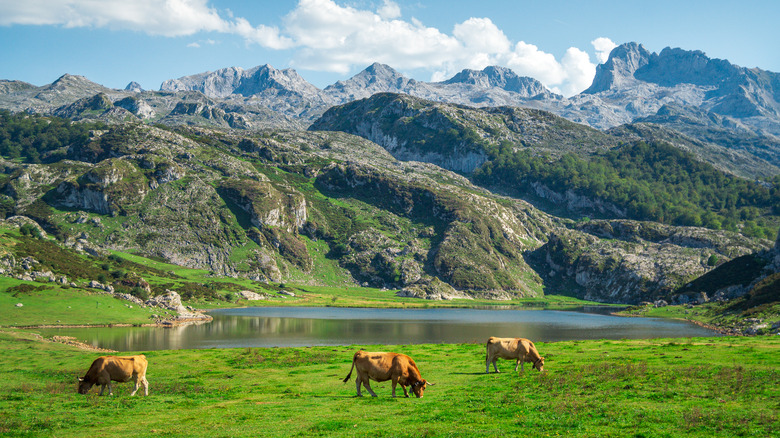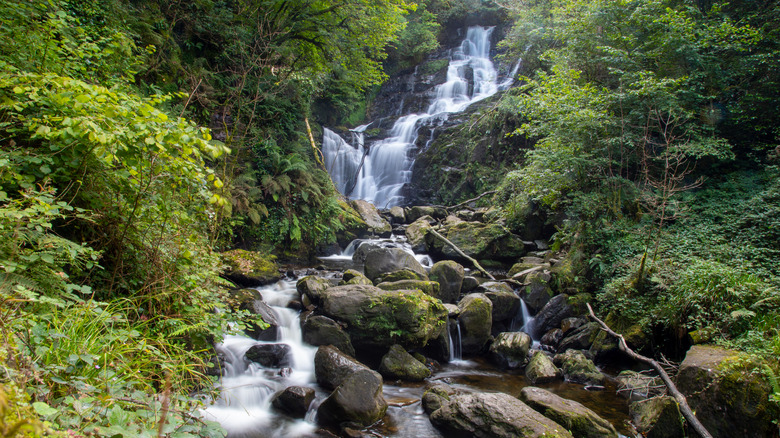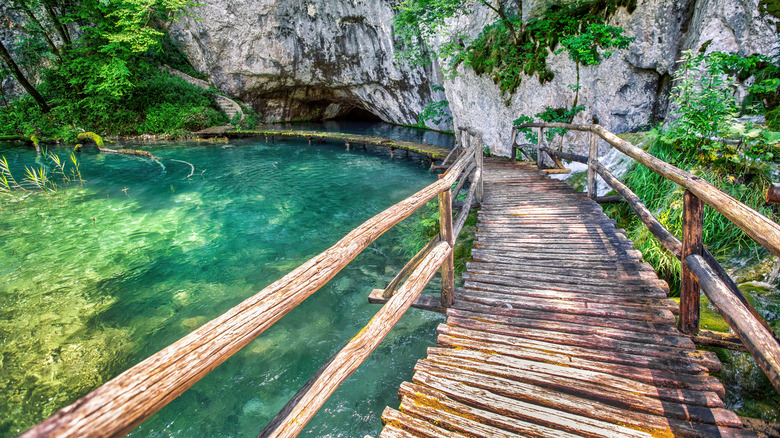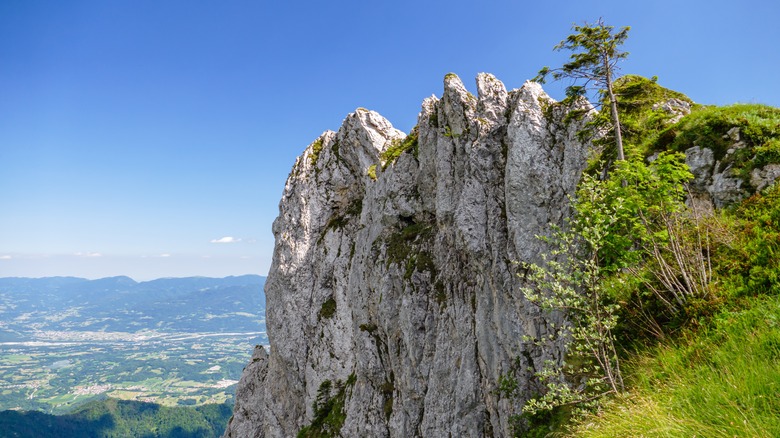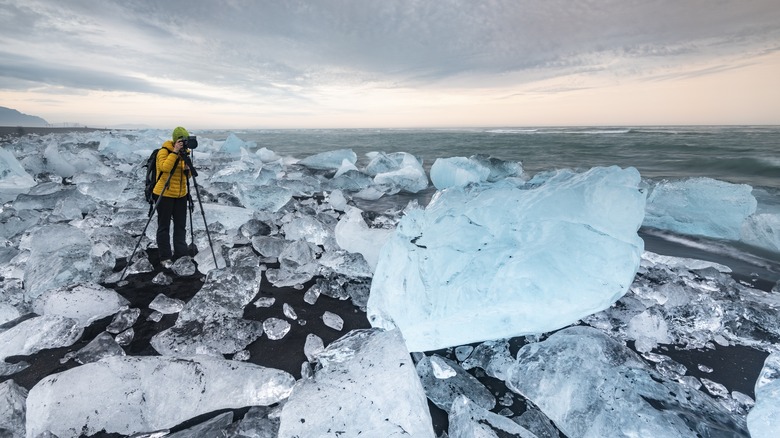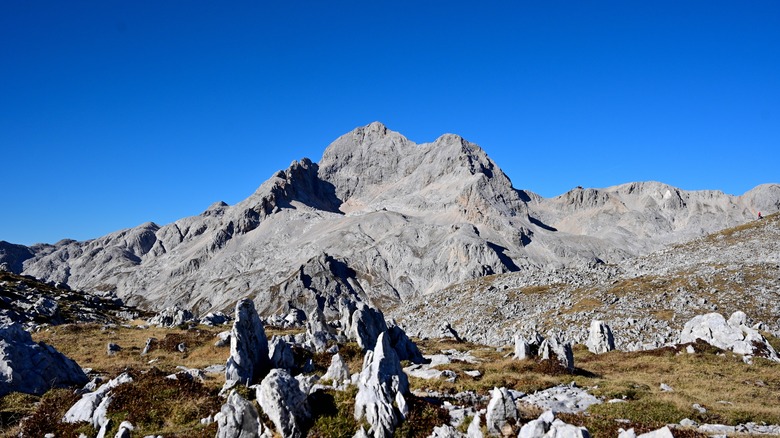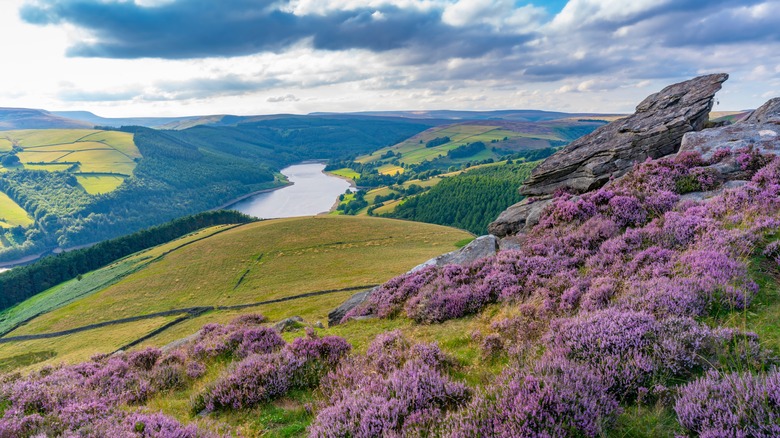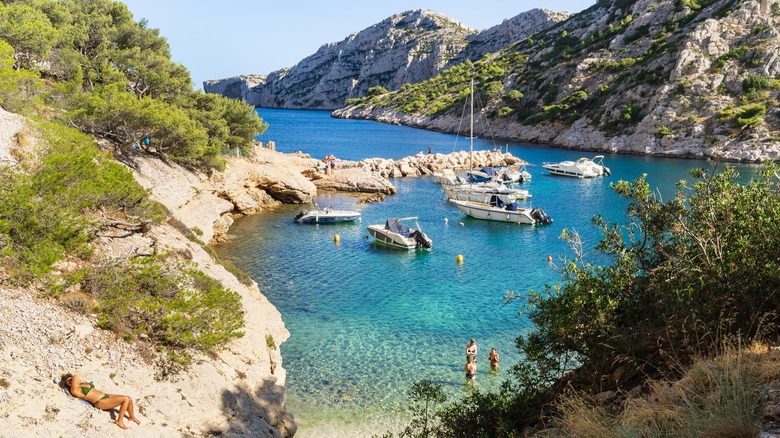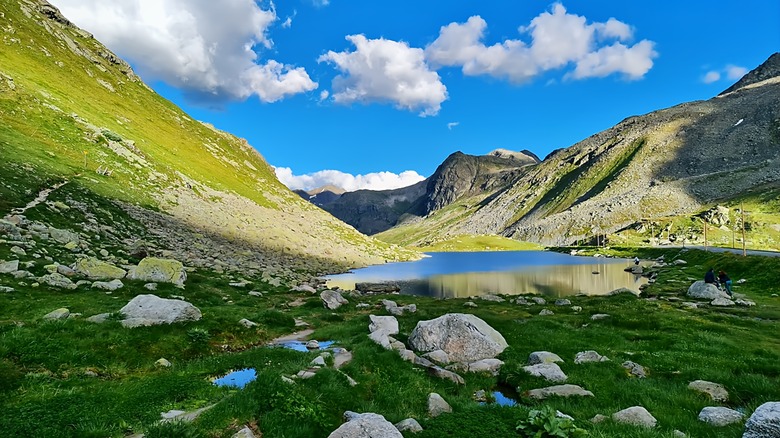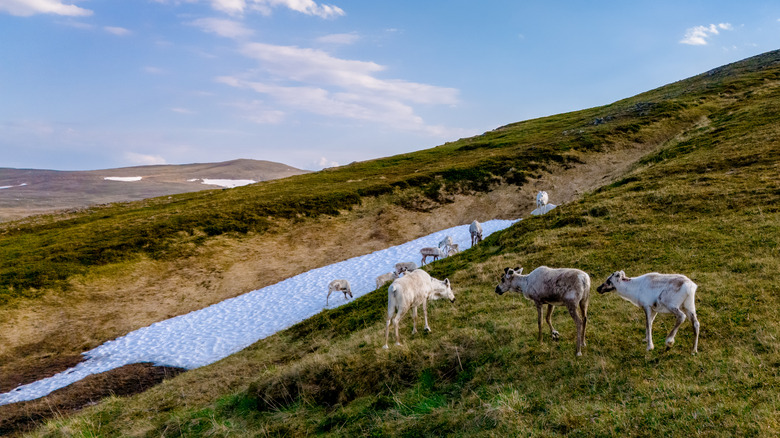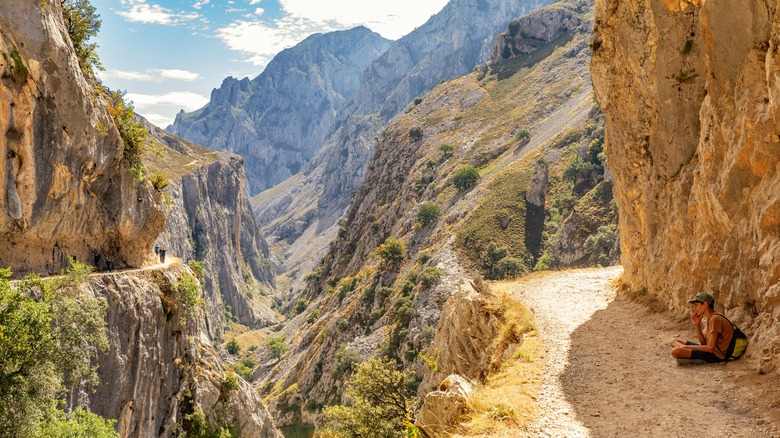Europe's Most Stunning National Parks Offer The Perfect Mix Of Wildlife, Adventure, And Culture, According To Research
When most people think of a European vacation, they might imagine visiting ancient ruins, people-watching in a fashionable capital city, or meandering through a museum filled with some of the world's most famous artworks. However, there is another kind of European vacation that is not so obvious: a trip to one of the hundreds of national parks. Not only are there plenty of beautiful hikes passing through a wide range of landscapes like Mediterranean coastlines and the snowy Alps, but a trip to a national park in Europe is also a chance to engage with the wild side of the culture — and see animals you won't find at home. Some of my favorite travel memories in Europe have taken place in these national parks, bonding with friends as we trudged up steep slopes and evaded the goats trying to steal our lunch.
Every country in Europe has its own system of national parks, with some, like Norway, having as many as 47, while others, like Switzerland, have only one. In many cases, a country's national park can serve as a gateway to a different side of its culture, where you can engage with the country's deeper history and identity. Here are some of the most stunning European national parks, where you'll find not only incredible outdoor adventures and hiking trails but also unique natural landscapes worth traveling for.
Picos de Europa National Park, Spain
Spain is a country filled with diverse landscapes, from the Pyrenees Mountains that border France to the sandy beaches of the Costa del Sol that look out across the Mediterranean. However, one of the prettiest national parks can be found, partially located in three regions in northern Spain: Cantabria, Asturias, and Castile and León. Picos de Europa is one of Europe's prettiest national parks, and its name, which translates to "Peaks of Europe," references the fact that these were the first mountains sailors would see when approaching from the sea.
Unlike other national parks, which are typically closed off to human settlement, this park supports a local population that uses the land for agriculture. You'll see plenty of cows and goats on the trails, like the 14-mile Ruta del Cares, which is one of the most popular routes in the park. There are even caves where dairy farmers continue to age their cheese traditionally, although these are closed to visitors.
Covering over 160,000 acres of land, there are a few places you can find a hotel or campground to base your adventures in the park. However, the most direct route is to fly into the Asturias Airport, rent a car, and drive 67 miles east to Cangas de Onís, a bustling tourist town with a stunning Roman bridge and proximity to popular routes.
Killarney National Park, Ireland
The Ring of Kerry is one of the most popular road routes in Ireland, with most tours leaving from the town of Killarney, which also happens to be the launching point for adventures in Ireland's first national park. In this place of 25,000 acres where the mountains meet the lakes, you can find rugged high-altitude trails with sweeping views as well as flat paths that are accessible to all travelers and lead to interspersed historical landmarks.
For a dose of history, visit Ross Castle or the Muckross House and Gardens before taking the short three-mile Lakeside Walk that runs along the waterfront. If your feet are tired from traveling, you could also enjoy the views on a horse-drawn carriage that leaves from the gardens. There are so many ways to travel around the park, with a wide network of cycling paths near town, plus boat tours leaving from The Old Boat House or nearby Ross Castle.
The best time to visit Killarney National Park is during the shoulder seasons (April to May and September to October) to avoid the overcrowded tourist season. The park is a great stop if you're planning a road trip through Ireland, but you can also fly directly into Killarney Airport, which is only a 20-minute drive from town.
Plitvice Lakes National Park, Croatia
Croatia is probably best known for its islands and beaches, but there is one magical landscape that consistently calls travelers inland. The oldest and largest national park in Croatia, Plitvice Lakes, is sometimes called the "land of the falling lakes" because of the 16 turquoise- and emerald-colored lakes that form over 90 waterfalls. It's a majestic landscape that visitors can explore via a boardwalk trail that lets you cross over the water for the best view of the multiple cascades. To get to Plitvice Lakes National Park, you can rent a car or take a bus from Zagreb or Zadar and book your overnight accommodations inside the park for convenience, or outside the park if you want something with more style.
Although the park is located halfway between the coast and the country's capital of Zagreb, it is an extremely popular destination that can get very crowded in the high season between July and August. This means that traffic can get backed up on the boardwalks, and you might find yourself behind some slow walkers if you take this route. As it turns out, the lakes actually make up less than 1% of the park's total protected area. Consider taking one of the trails that pass through the western cliffs and the Veliki Slap viewpoint, where you'll get a bird's-eye view of the lakes and boardwalks.
Parco Nazionale delle Dolomiti Bellunesi, Italy
Part of the Italian Alps, the Dolomites are a mountain range that extends across northeastern Italy. They encompass a huge swath of land and can be explored from major ski and tourism hubs like Cortina and Bolzano, but there is only one national park. The Parco Nazionale delle Dolomiti Bellunesi covers just 12 square miles of the mountain range, but is chock-full of mountain trails and shelters ideal for planning a hut-to-hut trek. The final leg of the Alta Via 1 runs through the park; this is an ambitious route that takes at least a week to complete. It was originally created for soldiers traveling through the mountains during World War II.
The national park is a 15-minute drive from the town of Belluno, which is accessible by a two-hour train or bus from Venice. One advantage of visiting the national park over other ski resort towns is that there are many museums and visitor centers, where you can learn more about the local flora and fauna, as well as the latest conservation efforts. Not to mention, Belluno is in the heart of Italy's Prosecco country, which is very fortunate if you're a fan of this sparkling white wine and are looking to combine wine tasting with adventures in the Dolomites.
Vatnajökull National Park, Iceland
The land of ice and fire is filled with natural wonders like waterfalls, fjords, and geothermal springs. There are many parks you can explore on a road trip through Iceland, but one of the most unique is Vatnajökull National Park, located in the southeast corner of the island, about 118 miles from the town of Vik. One of the most-visited areas of the park is the Jökulsárlón Lagoon and Diamond Beach, which owes its floating icebergs to the giant glacier for which the park is named. Many hiking trails of varying lengths can take you through both the green and icy landscapes of the park, but don't miss the rare opportunity to walk on top of a glacier and visit some ice caves. One adventure tour company even operates the world's only glacier zip line across a crevasse!
You can also tick off a lot of Iceland's most famous waterfalls in this park. Svartifoss, also known as the "black waterfall," is accessible via a 2-mile hike that begins at the Skaftafell visitors center. Dettifoss is one of the most powerful waterfalls in Europe, with a drop of 150 feet, and is found on the northern side of the park, closer to the towns of Akureyri and Húsavík.
Triglav National Park, Slovenia
Home to the highest peak in the Julian Alps, Slovenia's only national park is set around Mount Triglav, a stunning 9,396-foot peak that is an important symbol in Slovenian culture. With more than two centuries of mountaineering history, the mountain is a difficult but surprisingly accessible climb that 80,000 people summit year after year. It's even considered a rite of passage among Slovenians. The journey takes between six and seven hours, and there are huts along the way if you want to break it up into two days.
If you're more of a rambler than a mountaineer, Triglav National Park is still a great destination to appreciate the underrated natural beauty of Slovenia. Triglav National Park is a glacier-carved landscape of turquoise lakes, dense forests, and panoramic views. Shorter adventures include the Mostnica Gorge Trail, which is less than a mile long and leaves from the village of Stara Fužina, or you could visit the Savica Waterfall, which is just as iconic as Mount Triglav, but way easier to reach—although you should still expect a steep climb. There are multiple entry points to the park, but one of the most popular is Lake Bled, which is a 45-minute drive from the capital of Ljubljana — it also happens to be an extremely picturesque sp,ot even if you don't make it to Triglav
Peak District National Park, United Kingdom
The U.K.'s first national park is well-known to literature lovers who come to see the place that inspired Jane Austen and other romantic writers. Although many of those works were published in the 18th century, the area wasn't designated a national park until 1951. It is a beloved area for hiking and cycling, but the most iconic route that passes through the park is the 286-mile Pennine Way.
The park is split into two areas: The Dark Peak and the White Peak. However, it's the latter, more southern area where you'll find more limestone valleys and charming towns perfect for exploring. One of the most iconic trails in this area is the 5-mile Mam Tor and Winnats Pass Route, which has gorgeous valley views and follows a part of the Great Ridge near Castleton. You can stay in this area or base yourself in the town of Bakewell — where you must try the famous regional dessert at The Old Original Bakewell Pudding Shop. This is the largest town in the Peak District, and it's located 37 miles southeast of Manchester, which is the best city to fly into if you're coming from abroad. Many people interested in this park also consider the Lake District National Park, which is about 100 miles away, but if you have two weeks to spare, you could visit both.
Calanques National Park, France
On the outskirts of Marseille, France's second-largest city, the Calanques National Park is easily accessible via an hour-long bus or train ride, or a 20-minute drive if you rent a car. Defined by the calanques, which are steep rocky inlets with turquoise waters ideal for swimming and snorkeling, it's located along 12 miles of coastline. In the summer, sun-soakers arrive on foot and by boat to enjoy the warm weather, but there is more to this national park than the waterfront — especially for travelers motivated to find the crowd-free gems.
This national park has over 87 miles of marked trails that not only follow the coastline, but also venture into the more mountainous areas for bird's-eye views of the enchanting blue waters on trails like the one to Calanque de Morgiou, which also has the delightful benefit of ending at a beautiful beach. If you're short on time, this is probably one of the easiest parks to experience on a day trip from Marseille, with boat tours leaving from the Old Port during the summer season. You can also base yourself in Cassis, which is one of the quieter towns on the French Riviera and is located on the eastern side of the park.
Swiss National Park, Switzerland
Switzerland is packed with the prettiest and most iconic destinations, like high mountain passes and impressive peaks like Mont Blanc, the highest peak in Western Europe. However, some may find it surprising that there is only one national park in the whole country.
Located in the southeastern canton of Graubünden, the Swiss National Park is an area that protects the Engadin Valley and is an ideal place to try and spot native alpine animals like ibex, marmots, and red deer. The park has 21 trails, which range in length from the 1-mile Val Tantermozza Trail, which follows a short path with some very large trees, to the Lais da Macun, which will take you above the tree line to visit a series of 23 alpine lakes. Straying from the marked paths is prohibited due to the extreme conditions of the landscape, but if you're feeling unsure of your skills, you can also book a guided walk directly with the park authorities. This is the best move if your heart is set on seeing wildlife, because guides have a lot of experience spotting animals in the landscape.
The gateway town of the Swiss National Park is Zernez, which is a half-hour drive from the bustling ski resort town of St. Moritz, and a 2.5-hour drive from the international airport in Zurich. Although Switzerland is the idyllic European ski destination, the summer months are the best for visiting the national park since many of the trails close in winter when the snow comes.
Rondane National Park, Norway
The fjord-fringed country of Norway is high on the list of many nature-loving travelers who dream of dramatic Scandinavian landscapes. And although the best time to visit is during the summer, when the weather is warm and the trails are clear of snow — unless you plan on doing some cross-country skiing — you might find yourself humming a holiday tune if you visit Rondane National Park. The first national park in Norway was created to protect wild reindeer in 1962, and it is home to one of Europe's largest populations of this enchanting animal.
To get to this park, you can travel from the capital of Oslo to the town of Otta, which can be done by a 3-hour drive or a 4-hour train ride. From Otta, continue to one of the park's main starting points for hiking, like Høvringen, a small town with lodges from which you can access some of the traditional trails that have been used by reindeer hunters for thousands of years.
Methodology
To create this list of the best national parks in Europe, we used first-hand travel experiences, gathered information from official park sources, and consulted secondary sources like travel blogs and reviews of hiking trails. With hundreds of national parks to choose from, each operated by an independent government, we also consulted a variety of resources to find the parks that were most accessible to travelers, with suitable and abundant infrastructure like accommodation and ease of transportation. You don't have to be an experienced hiker to enjoy a national park, but we also considered more challenging trails that appeal to seasoned adventurers, and tried to include a mix of recommendations that would appeal to the widest variety of nature lovers.
